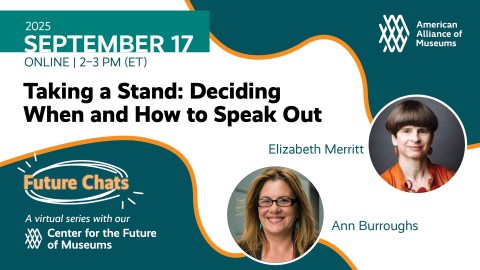I wanted to start the year on a positive note, I really did. But I find myself writing about a middle-of-the-night worry, instead.
What gave me nightmares? Not a bad dinner, unfortunately, but a steady diet of sobering news. I spent most of November and December reviewing CFM’s scanning from last year in order to draft TrendsWatch 2014. I identified 6 very interesting trends (which I look forward to sharing with you soon—no spoilers!), but something else swam up from the murky ocean of information: a projection, and a rather scary one, too.
It suggests a dark future I think is quite possible, given the way the world is going: a future in which the US fundamentally rethinks nonprofit status.
This shift could encompass, for example, revisiting what kinds of organizations are granted exemptions. The topic is already in play as people struggling to pay their bills note that the PGA, the NFLand nonpo hospitals that are indistinguishable from their for-profit kin are all tax exempt. Starting down that path could result in legal and regulatory distinctions between nonprofits that provide basic social services, such as health care, housing, food assistance and job training, and cultural nonprofits. The former, taking on responsibilities being shed by cash-strapped governments, are earning the gratitude of local, state and federal policy makers. The latter are increasingly being characterized as amenities that serve the interests of the wealthy, and therefore undeserving of broad tax payer support.
Museum concerns about threats to the charitable deductibility of gifts would pale in comparison to the prospect of becoming second class nonprofit citizens, if we are allowed to remain tax exempt at all, in such a scenario.
What are some of the signals that make me think this future is possible?
The tangible financial benefits of nonprofit status are already eroding. Phil Katz and I wrote in TrendsWatch 2012 about the increasing number of ways that municipalities are squeezing income from nonprofits—such as Payments in Lieu of Taxes (PILOTS), service fees and licensing costs. This trend has built up steam in the last two years. While the push to get funds from nonprofits originally focused on the big players—universities and hospitals—the Mayor of Reading, Pennsylvania recently asked any and all nonprofit property owners to help the city out with cash. And it is increasingly clear that the “voluntary” nature of PILOTs is coming into question. In Scranton, Pennsylvania the City Councilplayed hardball with nonprofit property owners, threatening to withhold city approvals regarding permits needed for property improvements, etc. if nonprofit property owners didn’t pay up. In Providence law makers have interpreted legislation in a way that essentially makes PILOTS mandatory.
But I am also seeing a basic shift in attitudes towards the nonprofit sector, a split in how policy makers and donors regard nonprofits. This ranges from the rhetoric in Congress, which lumped zoos & aquaria in with casinos and golf courses as unworthy to receive stimulus money, to the halls of academia. Princeton professor Peter Singer has been on a roll lately, promoting his thesis that donors have an ethical imperative to do the most good possible with their charitable giving, contrasting the good accomplished by a $1,000 donation to a museum’s capital campaign with using those funds to reduce the incidence of trachoma in third world countries. This would merely be irritating if Singer’s only audience were undergraduates in his ethics courses, but Bill Gates recently gave an interview in which he adopted Singer’s philosophy in toto. Referring to the theoretical choice to donate towards a new museum wing rather than on preventing blindness, he said “The moral equivalent is, we’re going to take 1 per cent of the people who visit this [museum] and blind them,” he says. “Are they willing, because it has the new wing, to take that risk? Hmm, maybe this blinding thing is slightly barbaric.” Gates, as the second richest man in the world, who in 2010 made world’s largest single charitable donation (for childhood vaccines), can be presumed to be a thought leader in philanthropy. What if the (false) dichotomy between curing blindness and supporting arts & culture catches on?
Lester Salamon, director of the Center for Civil Society Studies at Johns Hopkins University, has noted the increasing drift in the identity of and attitudes towards the nonprofit sector, and has written thoughtfully and at length about the forces buffeting our field. Salamon outlines three potential futures for the sector, but none encompass the darkest possibility that I outline above. In the rosiest of the three, the Renewal Scenario, “nonprofits engage in a concerted effort to re-think the role and operations of civil society, with the goal of achieving a new consensus regarding the sector’s functions and relationships with for-profits, government, and the public.” Salamon thinks this future is both desirable and attainable. I sure hope he is right. But we, as a field, need to take action to make sure that “renewal” is more likely than fragmentation.
Dark Futures: Nonprofit Fragmentation
Category:
Center for the Future of Museums Blog
Posted on








